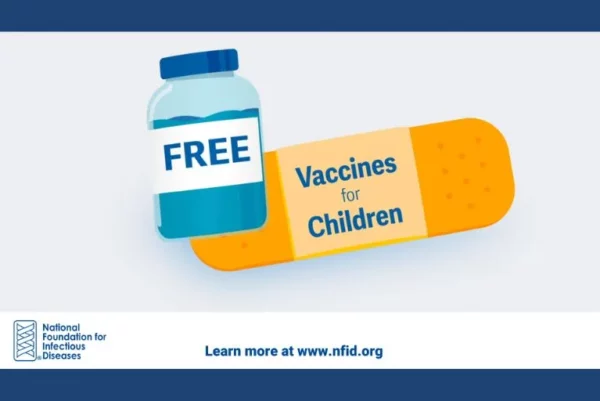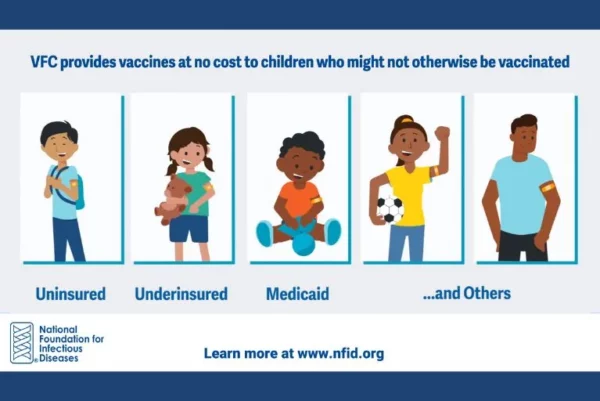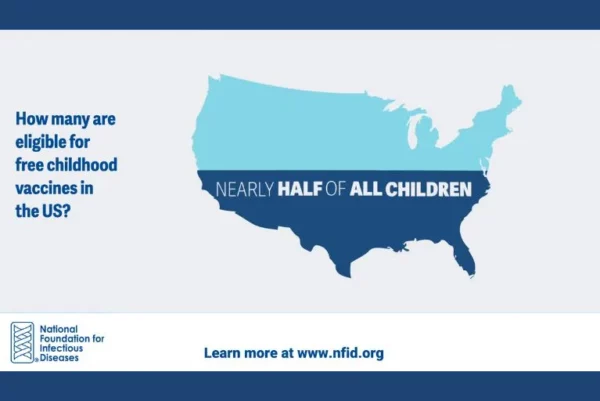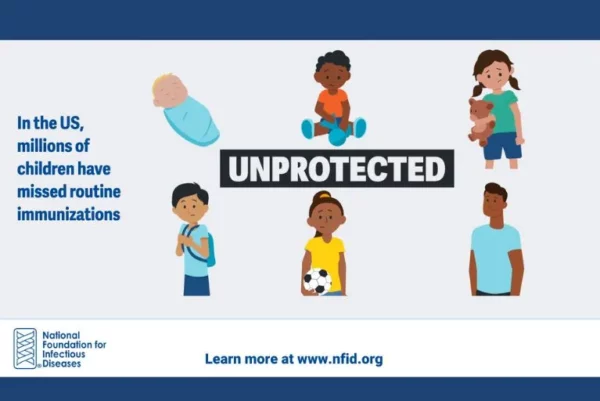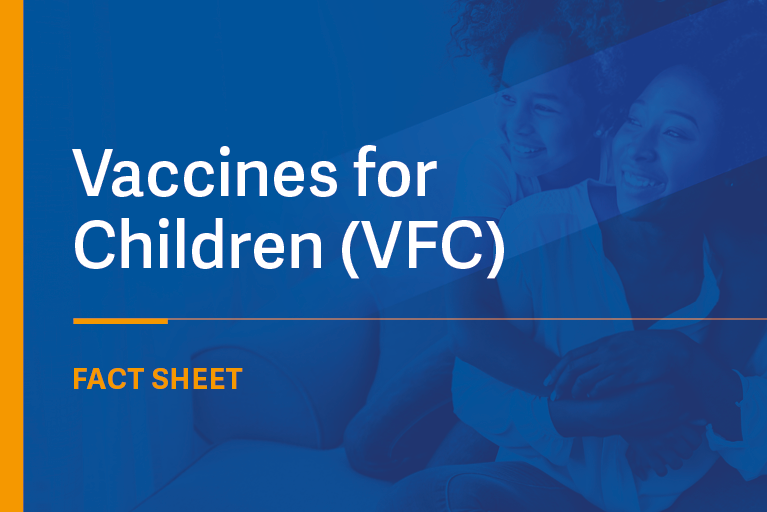
https://www.youtube.com/watch?v=d2AKb9QFh04
High immunization rates are essential to reduce the risk of outbreaks and prevent the resurgence of infectious diseases like measles, polio, and whooping cough. Unfortunately, the COVID-19 pandemic has led to a decline in routine immunizations among children. This decline appears most pronounced among publicly-insured and uninsured children-putting these individuals, their families, and their communities at risk for disease. Children who do not have commercial insurance are eligible for free or low-cost vaccines through the federally funded Vaccines for Children (VFC) program. Yet data from the Centers for Disease Control and Prevention (CDC) and others indicate a gap in immunization rates between children who are eligible to receive vaccines through the VFC program compared to those with private insurance. Through education and outreach, stakeholders must work together to address the disparity in childhood immunization rates.
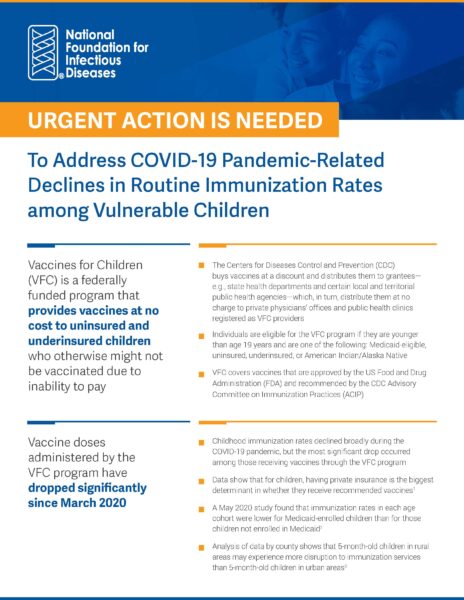
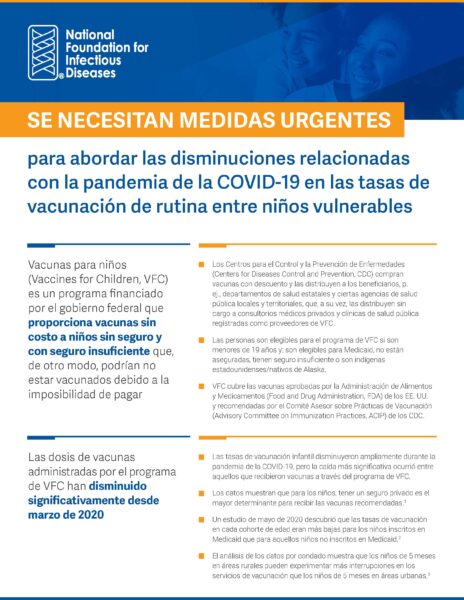


Sample Social Media Graphics and Posts
Share on social media to increase awareness of the Vaccines For Children program (right click on each image to save to desktop):- In the US, many children have fallen behind on recommended #vaccines. The #VaccinesForChildren program provides vaccines at no cost to uninsured and underinsured children: www.nfid.org/vfc
- #DYK: Childhood immunization rates declined broadly during #COVID-19 pandemic, but most significant drop was among those receiving #vaccines through the #VaccinesForChildren program? Learn more: www.nfid.org/vfc #GetVaccinated
- #VaccinesForChildren program helps protect the health of all children. Learn more about the essential federally funded program: www.nfid.org/vfc #GetVaccinated
- Addressing low routine #vaccination rates will require collaboration by all stakeholders, including advocates, HCPs, public health officials, parents, and policymakers. Learn more: www.nfid.org/vfc #VaccinesForChildren #GetVaccinated
Related Resources
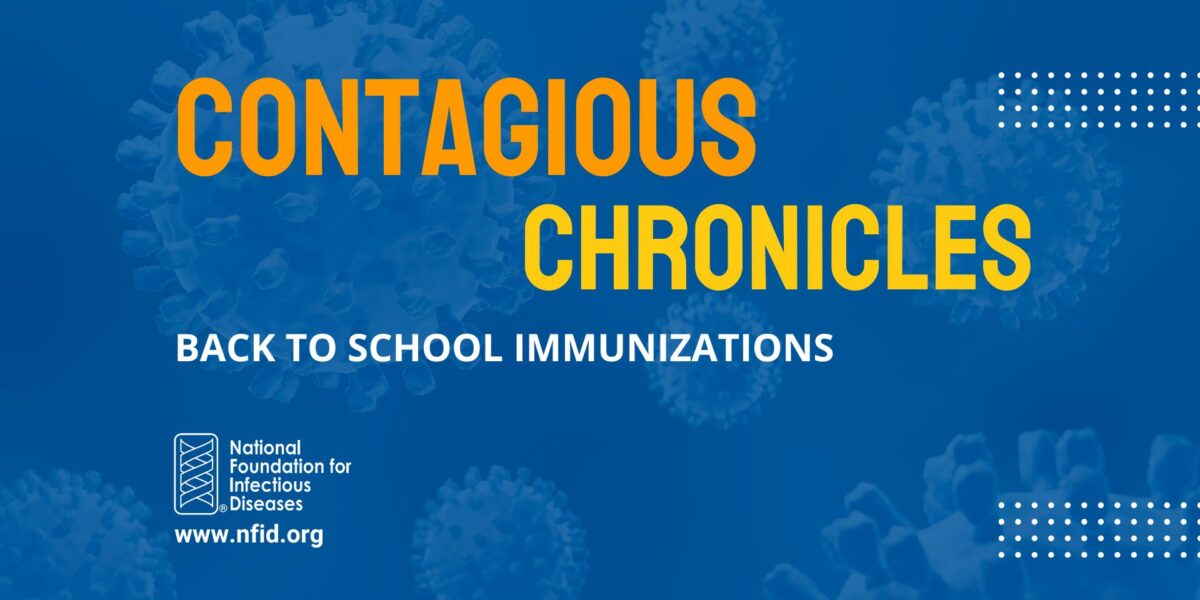
Contagious Chronicles
Back to School Immunizations
In this episode, NFID experts discuss current vaccine recommendations to help keep children healthy throughout the school year and address frequently asked questions …

Public Service Announcements, Video
What Is A Monoclonal Antibody?
Animated video on monoclonal antibodies—what they are, how they work, and their applications for COVID-19 and RSV
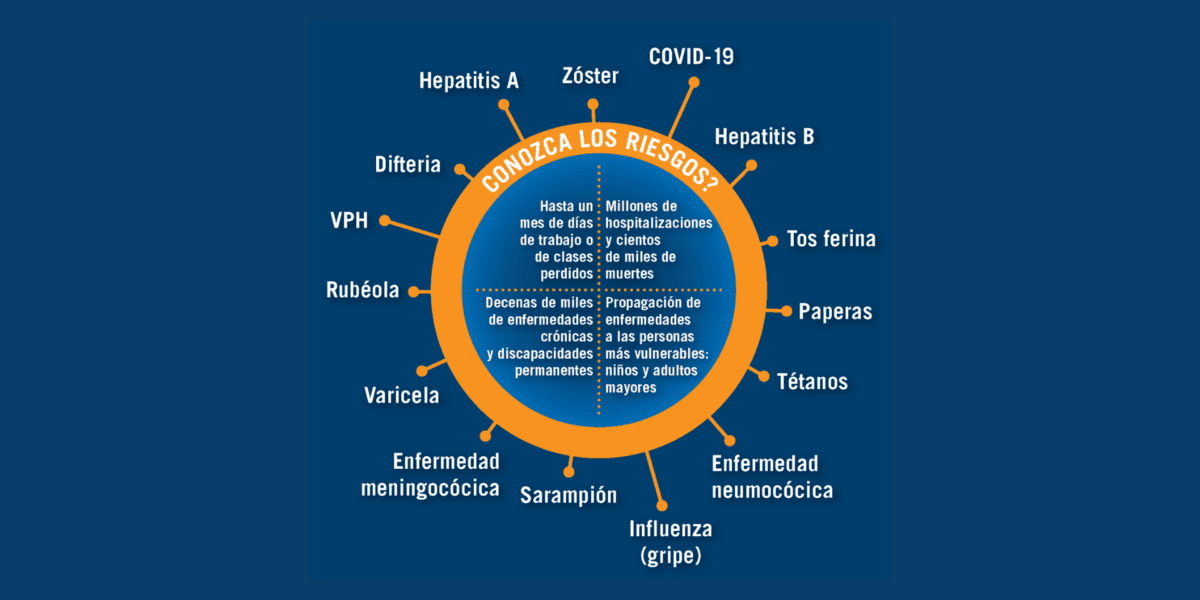
Graphic
Recommended Vaccines By Age (Spanish)
Infographics in Spanish of vaccines recommended for children, adolescents, adults, and adults 65+, and the risks of vaccine-preventable diseases

